Do you love to play video games? If so, you're not alone. More than 150 million Americans play video games.1 And out of all those gamers, 60% of them play every single day.
People love to play video games. And people love to win. That's why more and more people are using nootropics to improve their gaming.
In this post, we're going to talk about using nootropics for gaming. We'll examine how nootropics can improve gaming. Then, we'll take a look at a few nootropics that gamers are using to improve their playing. But first, let's see what effect gaming has on the brain.
Is gaming good or bad for your brain?
When I was a young gamer in the 1980's and 90's, I remember my parents and my friends' parents telling us that video games were bad for our brains. At the time, video games were still a relatively new phenomenon. There was very little science to suggest that gaming was good or bad for the brain. But what does the science have to say now, nearly 30 years later?
There's no question about it: Video games have an effect on the brain.2 Studies show that playing video games can change not only how the brain functions but also its structure. For example, brain regions associated with visuospatial skills are often found to be larger and more efficient in gamers.3 Playing fast-paced action games like first-person shooters or driving games can significantly improve visuomotor control.4
Video games can positively affect several areas of cognition. A 2017 study done on teens and young adults found that playing games enhanced working memory.5 The cognitive benefits of playing video games aren't limited to teens and young adults, though. A 2013 study showed that video games improved memory and attention in older adults aged 60 to 85 years old.6
 Playing video games can have cognitive, emotional, motivational, and social benefits.7 It's not all positive, though. Video games can have negative effects, too. A small percentage of people who play video games become addicted. Gaming addiction has become prevalent enough that the American Psychiatric Association is considering adding Internet Gaming Disorder (IGD) to their official list of mental disorders.8 Another concern is that some video games, like first-person shooters, are exposing children to violence at a young age. Some research suggests that these types of video games may desensitize children to violence.9
Playing video games can have cognitive, emotional, motivational, and social benefits.7 It's not all positive, though. Video games can have negative effects, too. A small percentage of people who play video games become addicted. Gaming addiction has become prevalent enough that the American Psychiatric Association is considering adding Internet Gaming Disorder (IGD) to their official list of mental disorders.8 Another concern is that some video games, like first-person shooters, are exposing children to violence at a young age. Some research suggests that these types of video games may desensitize children to violence.9
While video games can negatively affect a small percentage of the people who play them, overall the benefits seem to outweigh the potential downfalls.10 For most people gaming is a fun, harmless activity that can actually improve several aspects of cognition.
How nootropics can improve gaming

Video games often require a number of different physical skills. Fast reflexes, good hand-eye coordination, and excellent vision are all necessary to compete in many multiplayer games. But physical skills aren't the only ones needed to be competitive.
Most video games also require mental skills. Thinking quickly, being able to stay focused, and having a good memory can also affect how well you do at certain games. Many of the same skills used for gaming are the same skills that are needed to be successful in school, business, and in life.
For some people, all these skills come naturally. For the rest of us, we may struggle in one area or another. Fortunately, there are a number of different nootropics that can help.
If you're a regular reader of this website, you know that nootropics can increase focus and motivation, improve mood and memory, and even reduce anxiety and stress. There are also nootropics that can improve your reflexes, hand-eye coordination, and even your vision. All these improvements will undoubtedly result in better gaming.
 Using drugs, plants, and other substances to enhance performance is nothing new. In fact, people have been using substances to improve mental and physical performance since ancient times.11 It's normal to want to use everything at your disposal to be better, faster, stronger, and smarter. Nootropics offer a safe way to enhance gaming ability by improving several aspects of physical and mental performance.
Using drugs, plants, and other substances to enhance performance is nothing new. In fact, people have been using substances to improve mental and physical performance since ancient times.11 It's normal to want to use everything at your disposal to be better, faster, stronger, and smarter. Nootropics offer a safe way to enhance gaming ability by improving several aspects of physical and mental performance.
Now, let's take a look at some nootropics that can improve gaming.
Nootropics for gaming
1. Modafinil
One of the most popular nootropics being used by gamers is modafinil. This isn't surprising since it's one of the most popular nootropics being used, period. Modafinil can improve memory, increase wakefulness, and even boost motivation.
A 2013 study looked at the effects of modafinil on healthy adults.12 This study found that modafinil improved memory, increased task enjoyment, and increased overall productivity.
Other studies have found similar results. A study from 2003 found that healthy participants given modafinil had improvements in memory and were more alert and energetic.13 A 2004 study also showed that modafinil was able to improve several aspects of memory.14
For games that require sustained alertness and focus, modafinil has a lot to offer. It's slightly stronger cousin, armodafinil, is also a good choice for games that require long periods of focus. You can learn more about modafinil here: Modafinil – A Powerful and Popular Nootropic.
2. Piracetam (and other racetams)
The racetams are a class of smart drugs that have been around for decades. Piracetam was the first to be created over fifty years ago and dozens of others have been made since. These substances are known to increase focus, improve memory, and even reduce anxiety.
Many of the racetams are used as prescription drugs in several European countries as well as Russia. As such, most of the research that's been done has focused on treating illness, not improving cognition in healthy adults. However, nootropic users have reported a number of benefits from several different racetams.
Phenylpiracetam is one of the most popular racetams being used by gamers. Users report a variety of benefits including improved focus and increased motivation. Though these effects have not been studied in healthy volunteers, they have been noted in other populations. One study, for example, found that people with Chronic Fatigue Syndrome (CFS) had improved memory and attention when taking phenylpiracetam.15
Aniracetam is another popular racetam being used by gamers. Many users report that it is able to increase focus while, at the same time, decrease anxiety. Though this hasn't been studied in humans, animal studies show that aniracetam is able to reduce anxiety.16
You can learn more about the racetams here: The Best Racetams – A Comparison.
3. Caffeine & L-Theanine
This isn't a single nootropic, but rather a simple-yet-effective nootropic stack. It's also the most popular stack being used today. When taken together, caffeine and l-theanine can improve gaming by increasing alertness and focus without also increasing anxiety.
Caffeine, by itself, can cause anxiety and a dreaded crash for many of its users. When taken with l-theanine, though, those negative effects get erased. There have been thousands of reports from around the world by people who are using these two substances together to improve gaming. There is also plenty of science to support the use of caffeine and l-theanine for gaming.
A 2013 study that gave either caffeine, l-theanine, both, or a placebo to healthy volunteers found that the participants getting both showed the greatest improvements in attention.17 A 2008 study showed similar results.18 Healthy participants given both caffeine and l-theanine showed faster reaction times, improved sentence accuracy, faster working memory, and also reported an improvement in mood.
You can learn more about this basic nootropic stack here: L-Theanine – A Calming Nootropic.
4. Kratom
Though not usually thought of as a nootropic, kratom does have a number of nootropic benefits. And it is widely used by gamers to improve mood, focus, and motivation.
There are thousands and thousands of anecdotal reports around the internet of people using kratom for a variety of reasons. This plant has been used in traditional medicine for centuries, but has only recently started being scientifically studied.
A paper published in 2015 looked at the available research that has been done on kratom.19 The review found that kratom has stimulating, mood-enhancing, and anxiety-reducing properties. Another paper published two years earlier also showed similar benefits.20
You can learn more about using kratom for gaming here: The Nootropic Benefits of Kratom.
Conclusion
It's safe to assume that video games aren't going anywhere anytime soon. People have loved to play games since the beginning of time and the popularity of video games has exploded over the past few decades.
Nootropics can help to improve your gaming. Whether it's by improving memory, increasing focus, or decreasing anxiety, nootropics can help you to become a better gamer. Have you used any nootropics for gaming? If you have, feel free to leave a response in the comments section at the bottom.
To learn more about nootropics, sign up for the Nootropics Zone newsletter. You'll get the free gift, The Ultimate Nootropics Quick Reference Guide.
References
1Entertainment Software Association. (2018). Essential facts about the computer and video game industry. Retrieved May 4, 2019 from http://www.theesa.com/wp-content/uploads/2018/05/EF2018_FINAL.pdf
2Frontiers. (2017, June 22). Video games can change your brain: studies investigating how playing video games can affect the brain have shown that they can cause changes in many brain regions. Science Daily. Retrieved May 5, 2023 from https://www.sciencedaily.com/releases/2017/06/170622103824.htm
3Momi, D., Smeralda, C., Sprugnoli, G., Ferrone, S., Rossi, S., Rossi, A., Di Lorenzo, G., & Santarnecchi, E. (2018). Acute and long-lasting cortical thickness changes following intensive first-person action video game practice. Behavioral Brain Research, 353:62-73.
4Li, L., Chen, R., & Chen, J. (2016). Playing action video games improves visuomotor control. Psychological Science, 27(8):1092-1108.
5Moisala, M., Salmela, V., Hietajarvi, L., Carlson, S., Vuontela, V., Lonka, K., Hakkarainen, K., Salmela-Aro, K., & Alho, K. (2017). Gaming is related to enhanced working memory performance and task-related cortical activity. Brain Research, 1655:204-15.
6Anguera, J., Boccanfuso, J., Rintoul, J., Al-Hashimi, O., Faraji, F., Janowich, J., Kong, E., Larraburo, Y., Rolle, C., Johnston, E., & Gazzaley, A. (2013). Video game training enhances cognitive control in older adults. Nature, 501(7465):97-101.
7Granic, I., Lobel, A., & Engels, R. (2014). The benefits of playing video games. The American Psychologist, 69(1):66-78.
8American Psychiatric Association. (2013). Diagnostic and Statistical Manual of Mental Disorders, 5th Edition. Washington, DC.
9Montag, C., Weber, B., Trautner, P., Newport, B., Markett, S., Walter, N., Felten, A., & Reuter, M. (2012). Does excessive play of violent first-person-shooter-video-games dampen brain activity in response to emotional stimuli? Biological Psychology, 89(1):107-11.
10Palaus, M., Marron, E., Viejo-Sobera, R., & Redolar-Ripoll, D. (2017). Neural basis of video gaming: a systematic review. Frontiers in Human Neuroscience. Retrieved May 5, 2023 from https://www.frontiersin.org/articles/10.3389/fnhum.2017.00248/full
11Bowers, L. (1998). Athletic drug testing. Clinics in Sports Medicine, 17(2):299-318.
12Muller, U., Rowe, J., Rittman, T., Lewis, C., Robbins, T., & Sahakian, B. (2013). Effects of modafinil on non-verbal cognition, task enjoyment and creative thinking in healthy volunteers. Neuropharmacology, 64:490-5.
13Turner, D., Robbins, T., Clark, L, Aron, A., Dowson, J., & Sahakian, B. (2003). Cognitive enhancing effects of modafinil in healthy volunteers. Psychopharmacology, 165(3):260-9.
14Muller, U., Steffenhagen, N., Regenthal, R., & Bublak, P. (2004). Effects of modafinil on working memory processes in humans. Psychopharmacology, 177(1-2):161-9.
15Akhapkina, V., Fedin, A., Avedisova, A., et al. (2004). Efficacy of Phenotropil for treatment of astenic and chronic fatigue syndromes [in Russian]. Nervnye Bolezni, 3:28-32.
16Nakamura, K., & Kurasawa, M. (2001). Anxiolytic effects or aniracetam in three different mouse models of anxiety and the underlying mechanism. European Journal of Pharmacology, 420(1):33-43.
17Kahathuduwa, C., Dassanayake, T., Amarakoon, A., & Weerasinghe, V. (2017). Acute effects of theanine, caffeine, and theanine-caffeine combination on attention. Nutritional Neuroscience, 20(6):369-377.
18Haskell, C., Kennedy, D., Milne, A., Wesnes, K., & Scholey, A. (2008). The effects of l-theanine, caffeine, and their combination on cognition and mood. Biological Psychology, 77(2):113-22.
19Cinosi, E., Martinotti, G., Simonato, P., Singh, D., Demetrovics, Z., et al. (2015). Following “the roots” of kratom (Mitragyna speciosa): the evolution of an enhancer from a traditional use to increase work and productivity in Southeast Asia to a recreational psychoactive drug in western countries. Biomedical Research International. Published online Nov. 10, 2015.
20Hassan, Z., Muzaimi, M., Navaratnam, V., Yusoff, N., Suhaimi, F., et al. (2013). From kratom to mitragynine and its derivatives: physiological and behavioural effects related to use, abuse, and addiction. Neuroscience and Biobehavioral Reviews, 37(2):138-51.
[This article was originally published on May 17, 2019. Updated May 5, 2023.]





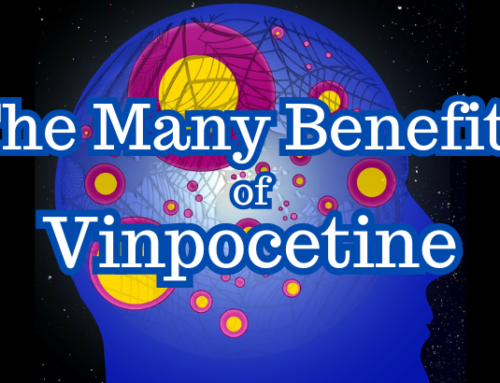
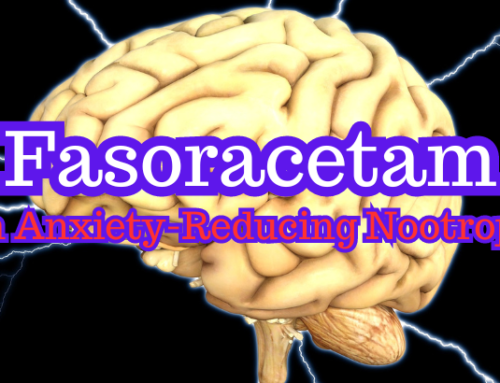
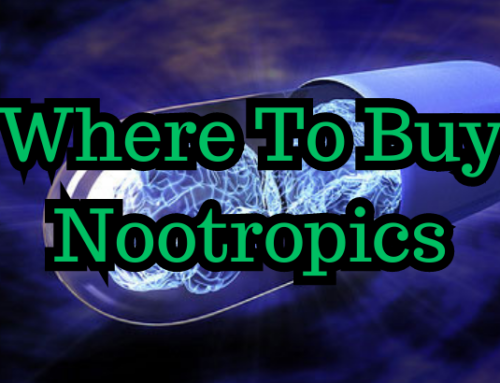
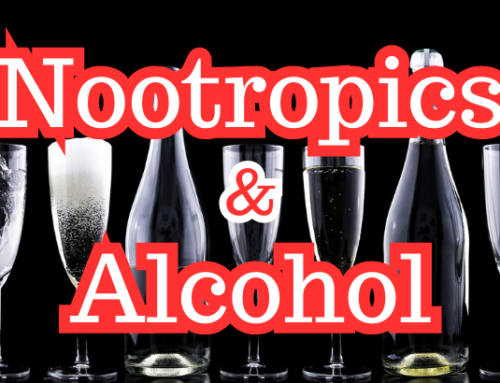
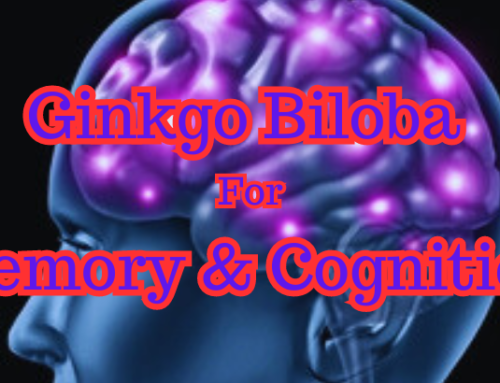

Leave a Reply